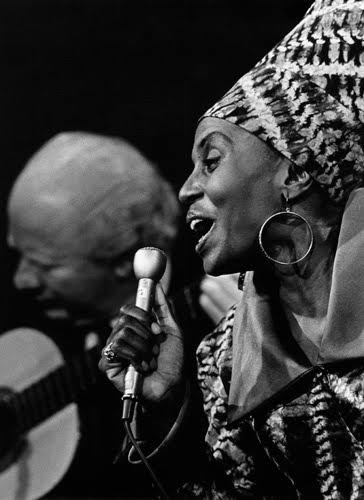
The FESTAC’77 was the stuff of legend. It was the second black cultural festival that ever took place in Africa, after the maiden two weeks event in Dakar, Senegal in April 1966. The idea for a festival of this sort was conceived by the then President of Senegal - Leopold Sedar Senghor. Senghor was a foundational member of the Negritude movement that sought to affirm and elevate the achievements of Black people and African culture throughout the world. After a meeting with the Pan-African Cultural Society in Paris, there was a determination to propagate the values and originality of Black culture. This interest developed by the ideas, discussion and decisions at that meeting generated the demand for the first Black Cultural Festival which was ultimately held in Dakar in 1966. Nigeria was offered the right to host the second festival, which was initially slated for 1970. The festival could not hold due to the civil war of 1967-1970 and its aftermath. It was rescheduled for 1974, but again could not hold because the required facilities for the event were not ready. After due consultation with other participants, the International Festival Committee of the Festival thus ratified the new date of January 15-February 12, 1977 as scheduled by the then military government under the leadership of Lt. General Olusegun Obasanjo.


FESTAC’77 was a great art and cultural assembly of Africans and African-Americans that was held for one month in Nigeria. It was truly a class act that brought people of all races and nationalities to Nigeria in celebration of acts and culture that since not been surpassed. Most of the festival took place in Lagos State – in the main, conference and cinema halls of the National Theatre, Iganmu which was built for the event; the National Stadium in Surulere; Tafawa Balewa Square in Lagos; and in the Lagos City Hall; except for Durbar, a spectacular horse game involving over 3000 horses which took place in Kaduna, North-West, Nigeria.

In addition, the festival included numerous exhibitions of paintings and sculpture, books, crafts, science and technology, etc. The festival also had a Colloquium where more than 200 of the leading black scholars in the world gathered each day to present papers, engage in debate, and prepare reports on themes such as arts and pedagogy, languages and literature, philosophy and religion, historical awareness and science and technology. The principal objectives of the festival were to create a forum for the focusing of attention on the enormous richness and diversity of African contributions to the world culture and the opportunity recounting the achievements of Africa’s founding fathers.

The festival’s anthem titled “For My People”, was written by Margaret Walker from Alabama, USA, while the music was produced by Akin Euba, a Nigerian, who was the head of the music section of the International Secretariat of FESTAC. The anthem was presented by a four-part choir, with piano, drum set, conga drums and string bass. Top music artists of black origin in Africa and the rest of the world present at the festival include Stevie Wonder, The Sun Ra Arkestra, Tabu Ley and Franco from Congo, Bembeya Jazz National from Guinea, Dudu Pukwana, and Miriam Makeba from South Africa etc. The emblem of the festival was a piece of sculptured art in form of a mask with the face of one of Africa’s most influential women royalties from the ancient Benin kingdom in Nigeria, Iyoba Idia.


In spite of the huge costing of hosting the festival, the gains far outweighed the cost incurred. Nigeria hosted participants from Black nations and a retinue of cultural delegations from African, the Carribean Islands, and Europeans as well as North American countries. It is on record that the festival was the grandest cultural event so far and it remained one of the greatest legacies of that the art enthusiastic Black and African people will savour for a long time. It was a rare historic opportunity that significantly marked Africa’s renaissance and captured the aspirations of the Black and African continent. The festival re-enacted the sovereign determination of Africans to bring themselves closer and at the same time march forward towards others possibly to reach out globally and form a truly worthy part of the world from a common historical and cultural position.
credit: History Magazine
